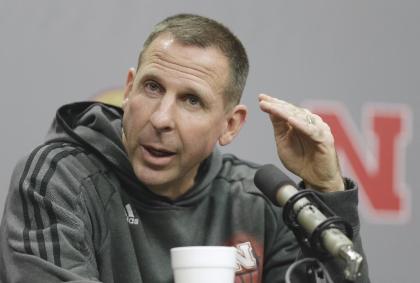Why Nebraska's surprise firing of Bo Pelini is good for the Big Ten
If I’m Jim Delany, I like the move Nebraska made Sunday to fire Bo Pelini.
Not because a man losing his job is something to celebrate. Not because Pelini deserves any piling on. Those are not reasons for the Big Ten commissioner to approve of Nebraska’s somewhat surprising move.
The reason to like it is because it signals that one of the most traditionally successful schools in the conference is serious about getting back to winning championships and being a top-10 football program.

And the Big Ten needs all the help it can get in that area.
This is a league that has gotten comfortable being mediocre while raking in piles of Big Ten Network loot. It has allowed its facilities and coaching talent to fall behind other conferences. And that has translated to the athletic talent as well.
Those things show up in the recruiting rankings, where Ohio State was the only Big Ten program to have a Rivals.com Top 20 signing class last February, and only three Big Ten schools were in the Top 30 (the Buckeyes, Michigan State and Penn State).
The league has fallen behind, which is why there is a very real chance it will be the one Power Five conference left out of the first College Football Playoff. It needs more than just one or two programs daring to be great; it needs an SEC-like glut of them.
In Delany’s grand expansion plan, Nebraska was to be part of that glut. Whereas Rutgers and Maryland were added to the conference this year for demographics and profiteering, the addition of the Cornhuskers in 2011 was designed to specifically boost the Big Ten’s football power.
It hasn’t happened.
Pelini had a pretty good seven-year run at Nebraska – good enough to keep his job in perpetuity at many schools. He’s won nine or 10 games every season and had a winning record in conference play every season. He kept the Cornhuskers a slight cut above the Big Ten’s sprawling and uninspiring middle class.
But this is Nebraska, a place that basically lived in the national top 10 from the early 1960s to the early part of the 21st century. Nebraska was the most consistent winner going, humming along forever under Bob Devaney and then Tom Osborne.
And then things got rocky, and the search for greatness has been on ever since. It’s been on long enough, in fact, that some Cornhuskers fans almost forgot what it looked like. Which is why Pelini’s pretty goodness was good enough for several years – it was better than the Bill Callahan Era, and nobody wanted to go back to those days.
But since arriving in the Big Ten, the Bo Plateau – nine or 10 wins and four losses – began to get old. The program that took up residence in the top 10 and was a regular in major bowl games hasn’t finished ranked higher than 14th under Pelini and hasn’t played in a brand-name bowl.
Despite being positioned in a division opposite league heavy Ohio State, Nebraska couldn’t win a Big Ten title. And now it has been shuffled down further in what is not exactly a murderer’s row of competition.
Pelini was 1-3 against Wisconsin, with all three losses of the humiliating variety: a 31-point beating in 2011; the emasculation in the 2012 Big Ten championship game, where the favored Cornhuskers gave up 70 points; and Melvin Gordon’s 408-yard performance this month in a 59-24 pounding. Nebraska isn’t just a step behind the Badgers at this point in the Big Ten West; it is a giant leap behind.
Then there is Minnesota. The Gophers don’t recruit on the same level as the Cornhuskers, don’t have the same facilities and don’t have the same fan support – but they have Nebraska’s number. Minnesota beat Nebraska in Minneapolis last year and in Lincoln this year, eliminating the Huskers from Big Ten West title contention Nov. 22.
Failing to keep pace with Ohio State and Michigan State is one thing. But failing to be competitive with Wisconsin and being bypassed by Minnesota are not what Nebraska football aspires to be.
Of course, the aspirations must be realistic – and this is where it could get tricky. Because there are plenty of people out there who doubt whether the old Nebraska model for success can still work in the modern recruiting landscape.
Plucking select skill players from the coasts or the South to build around in-state linemen and an armada of walk-ons worked splendidly for Osborne. It’s less feasible today. Which means athletic director Shawn Eichorst must make a home-run hire capable of recruiting outside Nebraska’s local area and coaching up the talent to a championship level.
That person may not be easy to find – but the belief here is that if Eichorst is making the difficult decision to fire a nine-win coach, it’s because he’s confident he can get an 11-win successor. If he whiffs and ends up with a seven-win guy, well, the school can shop for a new AD in a few years, too.
But the good news for the Big Ten is that the Pelini firing shows that Nebraska wants to get back into the championship business. That’s why the school was poached from the Big 12 to begin with. And if a rich-but-underachieving league is going to progress from good to great, it needs the Cornhuskers to be part of that movement.
Popular college football video on Yahoo Sports:
